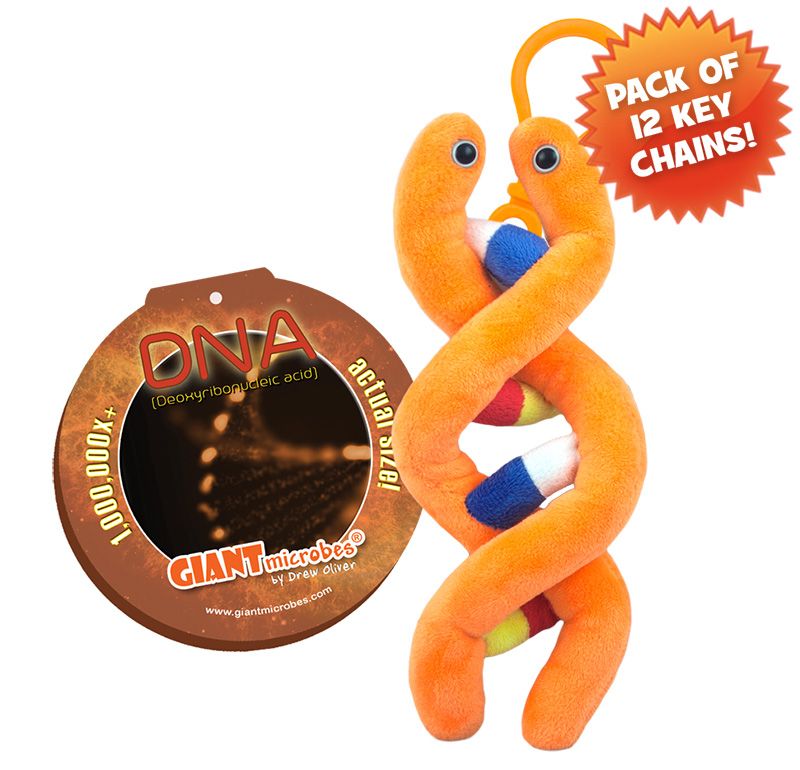DNA Key Chain 12 Pack
$79.95
Out of Stock
Pack of 12 DNA mini microbes (3") with mini-tag and key chain clip.
Product Details
Additional Information
| Sizes | Giantmicrobes are based on actual microbes, cells, organisms and other critters, only 1,000,000 times actual size! Gigantic (GG) 16-24" XL (XL) 10-15" Original (PD) 5-8" Keychain (KC) 2-4" with clip |
|---|---|
| Materials | Plush from all new materials. Stuffed with polyester fiber fill. Surface washable: sponge with water & soap, air dry. |
| Packaging | Each plush microbe includes a printed card with fun, educational and fascinating facts about the actual microbe or cell. |
| Safety | Every product meets or exceeds U.S. and European standards for safety. For ages 3 and up. |
All about DNA Key Chain 12 Pack
| Description | DNA is the set of biological instructions that are unique to every living creature on Earth. Inside a person DNA, you could find instructions for every millimeter of their body. Even though 99.9% of human DNA sequence is the same, the odds of two people have this same exact DNA profile is one in a billion! |
|---|
| Name | The name describes the molecule’s chemical structure consisting of a sugar, phosphate, and base. |
|---|
| Actual Size | The entire human genome contains is made up of about 20 thousand genes. That’s over 3 billion nucleotide bases. Unwrapping all the DNA in a human body is enough to reach the moon 6000 times! |
|---|
| Where It Lives | DNA stands for Deoxyribonucleic acid. It’s the genetic material and basis of life for nearly all living organisms, made of chemical building blocks called nucleotides. The nucleotides are cross-linked into double-stranded chains and packaged neatly into chromosomes. Nucleotide bases form sequences called genes, which code for proteins. |
|---|
| History | This genetic material was first discovered in 1869 by Friedrich Meischer. Nearly a century later, in the early 1950’s, James Watson and Francis Crick to discovered its double-helix structure. |
|---|
| Fascinating Facts | The Human Genome Project was an international collaboration to sequence and map the entire human genome. In February 2001, the International Human Genome Sequencing Consortium published the first draft of the human genome. |
|---|




